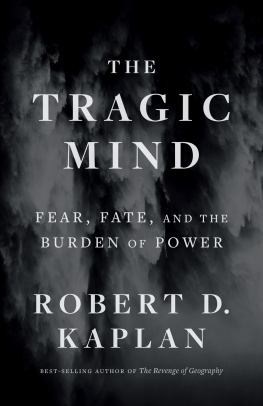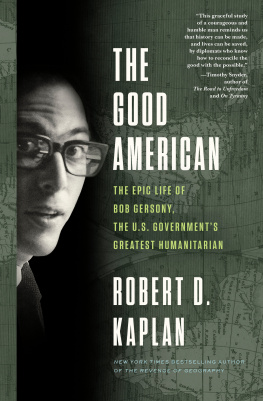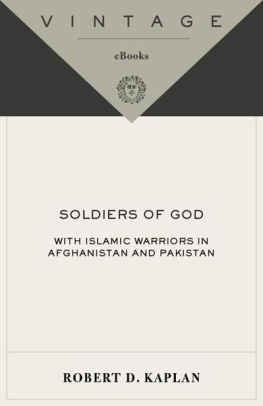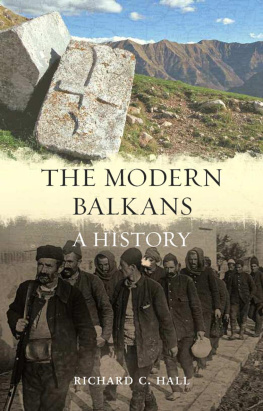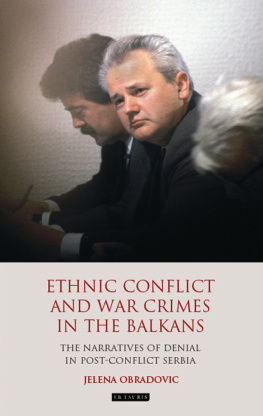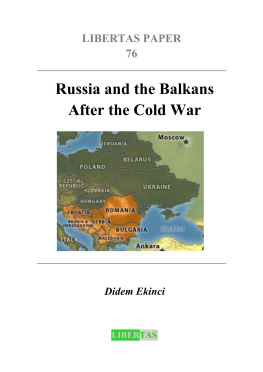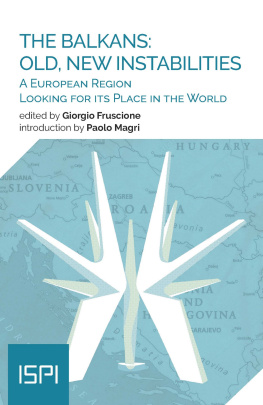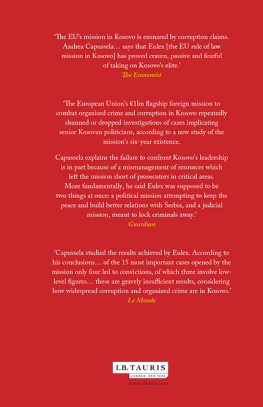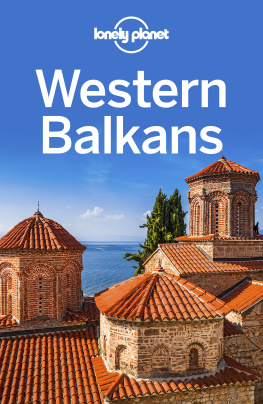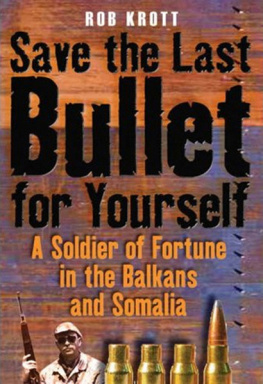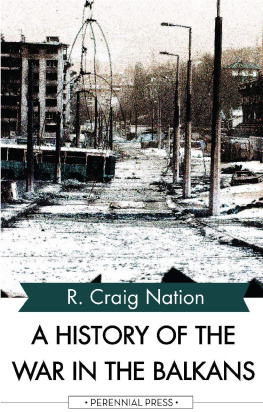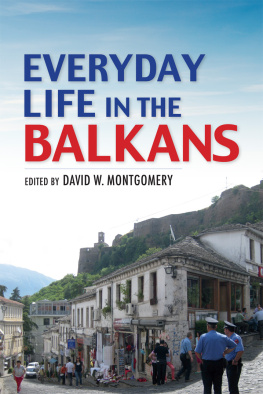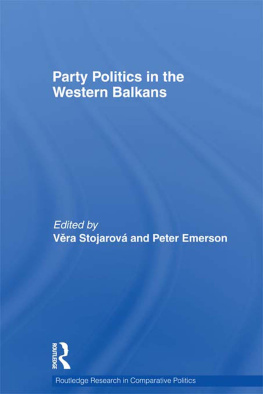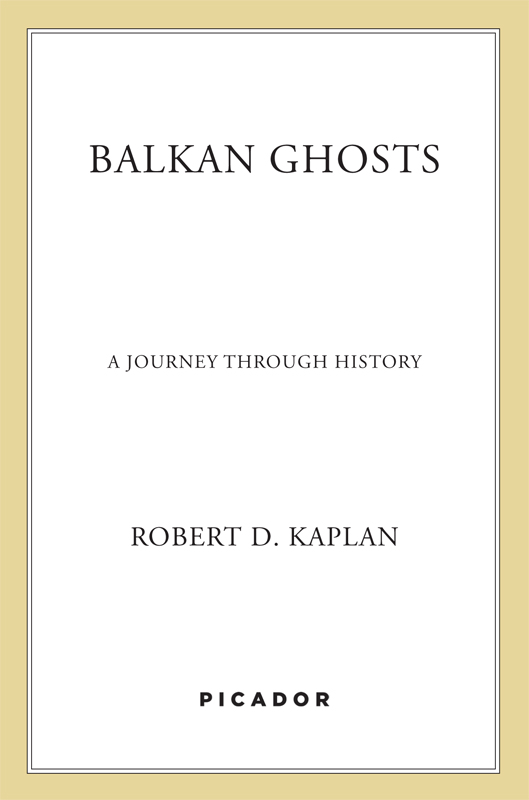
The author and publisher have provided this e-book to you for your personal use only. You may not make this e-book publicly available in any way. Copyright infringement is against the law. If you believe the copy of this e-book you are reading infringes on the authors copyright, please notify the publisher at: us.macmillanusa.com/piracy.
CONTENTS
For Stephen and Linda Kaplan
LIST OF ILLUSTRATIONS
1. Rebecca West
2. Archbishop Aloysius Stepinac
3. Kemal Ataturk
4. Milovan Djilas
5. The Athenee Palace Hotel in Bucharest
6. John Reed
7. President Nicolae Ceausescu and his wife, Elena
8. Nicolae Ceausecus falsely identified grave
9. Queen Marie of Romania
10. Prince Carol of Romania with Magda Lupescu
11. Corneliu Zelea-Codreanu
12. Mircea (Mihai), the authors guide in Bucovina
13. The painted Monastery of Humor in Bucovina
14. Father Ion Biazu of Cluj
15. Lorenz Loock and his family
16. Sunday at the Heroes Cemetery
17. Guillermo Angelov
18. Rila Monastery in Bulgaria
19. Prime Minister Andreas Papandreou and Dimitra Liani
FOREWORD
The story behind Balkan Ghosts: A Journey Through History provides a cautionary tale for writers. This is, essentially, a prewar, 1980s travel book that has, in the years of violent conflict in the 1990s in Bosnia, acquired a public policy significance which I never intended.
In the 1980s, I lived as a freelance writer in Greece, covering wars in Africa, the Middle East, and Afghanistan. The Balkans became my special concern, a place where there was no news but where one could see that declining economies, the erosion of communist power structures, and a history of ethnic rivalries might one day lead to conflict. In July 1989, months before the Berlin Wall fell and immediately before the East German refugee crisis, which would help precipitate that event, I warned thus in the Atlantic Monthly:
In the 1970s and 1980s the world witnessed the limits of superpower influence in places like Vietnam and Afghanistan. In the 1990s those limits may well become visible in a Third World region within Europe itself. The Balkans could shape the end of the century, just as they did the beginning.
In the Wall Street Journal Europe, on November 30, 1989, the same month that the Berlin Wall fell, I wrote:
Two historic concepts are emerging out of the ruins of communist Eastern Europe. One, Central Europe, the media is now beating to death. The other, the Balkans, the media has yet to discover.
I then went on to suggest the ethnic fissuring of Yugoslavia. Balkan Ghosts, in a small way, arose from that vision.
Balkan Ghosts was completed in 1990, before the first shot was fired in the war in Yugoslavia. It was initially rejected by several publishers, who thought the Balkans too obscure a region for significant book sales. It is an idiosyncratic travel book, and Bosniathe focus of the latest Balkan warfigured little in my travels through the region in the 1980s and 1990, a time when relatively few journalists were to be found in the Balkans. In Macedonia then there wasnt even a stringernow it is an international flashpoint with American soldiers, because of the fear that the fighting in Bosnia could spread south.
The book sold well in hardcover and has been a paperback bestseller. In 1993, just as President Clinton was contemplating forceful action to halt the war in Bosnia, he and Mrs. Clinton are said to have read Balkan Ghosts. The history of ethnic rivalry I detailed reportedly encouraged the Presidents pessimism about the region, andso it is saidwas a factor in his decision not to launch an overt military response in support of the Bosnian Moslems, who were being besieged by Bosnian Serbs.
That was disconcerting for two reasons. First, there is exceedingly little about Bosnia in Balkan Ghosts. As the reader will see, it is a subjective, broad-brush travel book about the whole Balkan peninsula, not a policy work. Only four of nineteen chapters are specifically devoted to the former Yugoslavia. Of those, one is about Croatia, one about Serbia and Kosovo, one about Macedonia, and one about the late dissident, Milovan Djilas. That policy makers, indeed a president, might rely on such a book in reaching a momentous military decision would be frightening, if true. My personal suspicion is that back in 1993, at the beginning of his term, Clinton had so little resolve that he was casting around for any excuse not to act.
But that only highlights the second reason why it is frustrating to find Balkan Ghosts cast as an anti-intervention tract: I myself have been a hawk on the issue. Since the first half of 1993, I have publicly advocated military action in support of the Bosnian Moslems, even raising the possibility of U.S. ground troops, on CNN and C-SPAN, in the Washington Post Outlook section, and in other forums. Many times in the past several years, at Fort Leavenworth and at Carlisle Barracks, I have made the case for intervention to the U.S. Army.
And I insist that there is no contradiction between a travel book that highlights a tradition of ethnic rivalries and the notion that American military power can stop such bloodshed in one part of the Balkans in our time. Here is why:
A difficult ethnic history will not, by itself, necessarily cause the loss of hundreds of thousands of lives in conditions resembling the Holocaust. For that calamity, one needs additional factors: Western confusion and inaction which, in turn, create a power vacuum. Without these other elements, the horrors of the 1990s might not have occurred.
In particular, the argument over whether the Bosnians are historically a peaceful people is a false one. Distinguished writers make a strong case for a tradition of good intergroup relations, especially in cities like Sarajevo. But this ethnic harmony has often been balanced on a knifes edge. In the short story A Letter from 1920, Yugoslav Nobel laureate Ivo Andric writes about an invisible border between love and hate in Bosnia, and how beneath so much tenderness and loving passion sometimes lie entire hurricanes of tethered and compressed hatreds maturing and awaiting their hour. Moreover, one must acknowledge not only the peaceful intercommunal tradition present through much of Bosnian history but also the strife there since 1992 (and between 1941 and 1945). Neither Martians nor President Clinton killed Bosnian Moslems. Other Bosnians did.
But then, so what? So what if the Balkans are a confused, often violent ethnic cauldron? Welcome to much of the world. This does not mean you crawl into an isolationist cocoon. You insert troops where overwhelming moral considerations crosshatch with strategic ones, regardless of the character of the local people. What happens in Bosnia will directly influence what happens in Kosovo, Macedonia, Albania, Greece, and Turkey: places that in some cases have tottering governments and in other cases have defense agreements with the United States, and are bristling with sophisticated weaponry. Further afield, what happens in Bosnia will significantly, albeit indirectly, affect future politics in the rest of Europe and Russia; as former Assistant Secretary of State for Europe Richard Holbrooke has said, we cannot afford to fail in Bosnia.
April 1996
ASSORTED COMMENTARY BY AUTHOR
The following opinion pieces ran in The Washington Post and The New York Times. The first piece appeared in the wake of the implementation of the Dayton Peace Accords, the second appeared during the diplomatic build-up to the Allied war against Serbia in Kosovo, the third during the war itself when events seemed to be going badly for the West, the fourth at the conclusion of that war when Balkan Ghosts came under criticism, and the fifth the day that Serbian dictator Slobodan Milosevic was removed from power through free elections.


